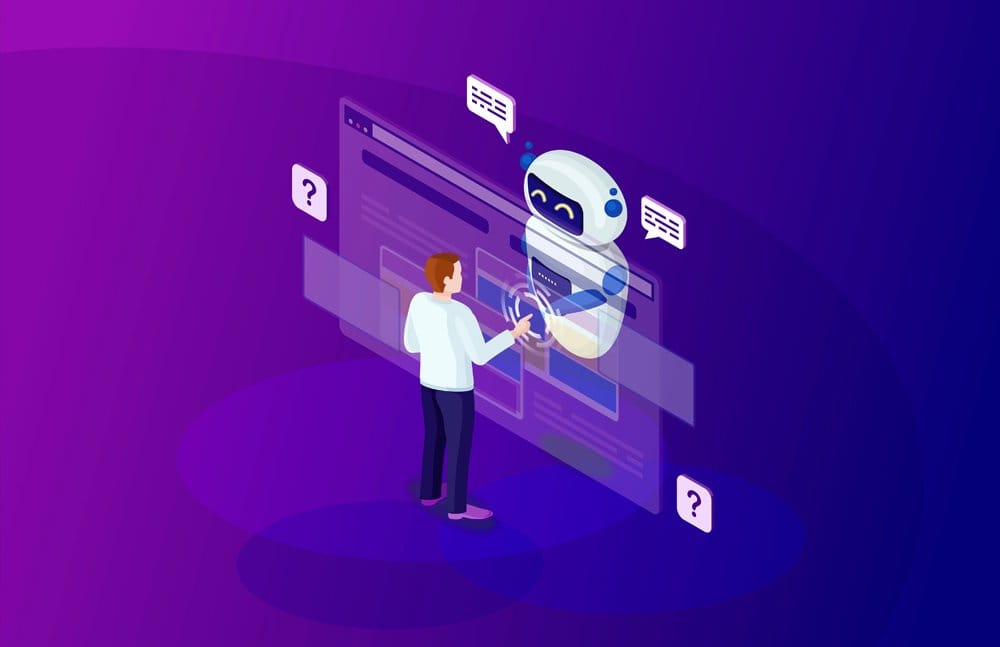
What is the main purpose of chatbot?
Chatbots have become an increasingly familiar presence in our digital lives. These computer programs simulate conversation, allowing us to interact with machines in a more natural way. But what exactly is the purpose of a chatbot? In short, chatbots are designed to bridge the gap between humans and technology, offering a range of functionalities across various sectors.

At their core, chatbots serve two main purposes:
-
Automating Tasks and Providing Information: Chatbots excel at handling repetitive tasks and delivering readily available information. They can answer frequently asked questions (FAQs), provide customer support, process orders, or guide users through specific workflows. This frees up human employees to focus on more complex issues and fosters a more efficient user experience.
-
Enhancing User Engagement: Chatbots can act as virtual assistants or companions, personalizing interactions and catering to individual needs. They can recommend products, answer questions in a friendly and informative way, or even provide entertainment. This interactive element can significantly enhance user engagement, improve brand loyalty, and create a more positive user experience.
Here’s a deeper dive into how chatbots achieve these goals:
-
Customer Service: Chatbots are often the first line of defense for customer support. They can answer basic inquiries, troubleshoot problems, or direct users to the appropriate resources. This 24/7 availability provides immediate assistance and reduces wait times for customers.
-
Marketing and Sales: Chatbots can play a crucial role in marketing and sales by qualifying leads, nurturing potential customers, and even guiding them through the sales funnel. They can answer product-related questions, offer personalized recommendations, or collect customer data.
-
Education and Training: Chatbots can be valuable tools for education and training. They can deliver learning materials in an interactive format, answer student queries, or provide feedback on assignments.
-
Healthcare: Chatbots are being used in healthcare to answer basic medical questions, schedule appointments, or even provide basic symptom checkers. They can also offer emotional support or mental health resources.
The capabilities of chatbots are constantly evolving. As advancements in artificial intelligence (AI) and natural language processing (NLP) continue, chatbots are becoming more sophisticated and nuanced in their interactions. They can understand complex questions, respond with empathy, and even learn from their conversations.
The potential of chatbots extends far beyond their current applications. Here’s a glimpse into what the future holds for these conversational tools:
-
Enhanced Personalization: Chatbots will become even more adept at personalizing interactions. By leveraging user data and past conversations, they can tailor their responses to individual needs and preferences, creating a truly unique user experience.
-
Omnichannel Integration: Chatbots will seamlessly integrate across various platforms, providing a consistent experience for users whether they’re interacting via messaging apps, websites, or voice assistants. This will allow for a more holistic and convenient user journey.
-
Cognitive Abilities and Emotion Detection: Advancements in AI will enable chatbots to develop more sophisticated cognitive abilities. They will be able to understand complex concepts, reason critically, and even solve problems. Additionally, emotion detection will allow chatbots to respond with empathy and adapt their communication style based on the user’s emotional state.
-
Specialized Chatbots for Complex Tasks: We can expect the rise of specialized chatbots designed to tackle specific tasks or professions. For example, healthcare chatbots could provide advanced medical guidance, while legal chatbots could offer basic legal advice.
-
Integration with the Internet of Things (IoT): Chatbots will become a central hub for controlling smart devices within the Internet of Things (IoT) ecosystem. Imagine using a chatbot to manage your smart home, schedule appointments with your doctor, or even order groceries – all through a single, conversational interface.
However, the future of chatbots also presents some challenges:
-
Ethical Considerations: As chatbots become more sophisticated, ethical considerations surrounding data privacy, bias, and transparency become paramount. It’s crucial to ensure responsible development and use of chatbot technology.
-
Maintaining Human Connection: While chatbots offer numerous benefits, it’s important to strike a balance between automation and human interaction. There will always be situations where a personal touch is necessary.
-
Job displacement: Concerns exist about chatbots potentially replacing human jobs in customer service and other sectors. The focus should be on reskilling and upskilling the workforce to adapt to the changing technological landscape.
In conclusion, chatbots are poised to play an increasingly significant role in shaping our digital future. By embracing advancements in AI and NLP while addressing ethical concerns, we can leverage chatbots to create a future where technology seamlessly integrates with our lives, empowering us to connect, learn, and accomplish tasks in a more efficient and engaging way.

